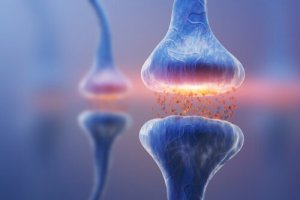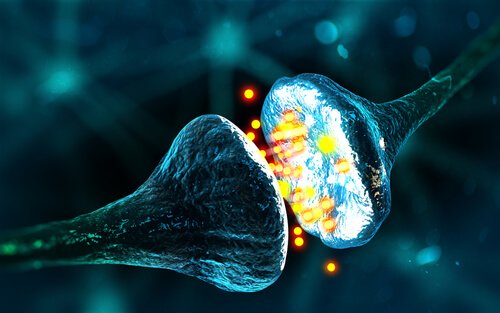Types of Synapses: Neural Communication

Our brain needs neurons to communicate for it to work properly. These interactions are known as synapses. But how exactly do they connect and how many types of synapses exist?
There are basically two main forms of synaptic transmission: electrical and chemical. Most communication through synapses occurs between the end of the axon (the longest part) of the neuron sending a message and the soma of the neuron receiving it.
What tends to surprise people the most about this is that there’s actually no direct contact in a synapse. There’s a tiny gap between the neurons, also known as the synaptic cleft. Keep reading to learn more about both types of synapses. They’re both neuron-t0-neuron connections with specific characteristics.

One of the Types of Synapses: Chemical
In a chemical synapse, information is sent through neurotransmitters. This is why we’ve named it “chemical synapse” because the neurotransmitters are chemical substances that send messages.
One interesting aspect of these synapses is that they’re asymmetrical. This means that they don’t occur in the exact same way between one neuron and another. They’re also unidirectional: the postsynaptic neuron, which receives the message, can’t send information to the presynaptic neuron, which sends the message.
A chemical synapse also has very specific characteristics, such as high plasticity. What that means is that synapses that have been more active can transmit information more easily. That plasticity also means the synapses can adapt to changes in their environment. Our nervous system is intelligent, and it focuses on the pathways we use most often.
This type of synapse has the advantage of being able to modulate the impulse transmission. But how? Well, it can do this because it’s able to regulate the levels of the:
- Neurotransmitter.
- Firing rate.
- Impulse intensity.
Chemical transmission between neurons occurs through modifiable neurotransmitters. But before we move on to electrical synapses, let’s take a closer look at the processes involved in a chemical synapse.
The Process of Chemical Synapses
- First, your brain synthesizes the neurotransmitter and stores it in a vesicle.
- Next, action potential floods the presynaptic membrane.
- Then, the depolarization of the presynaptic axon terminal causes the calcium channels to open (how wide depends on the voltage).
- Calcium starts to flow in through the channels.
- That calcium causes the vesicle to fuse with the presynaptic membrane.
- Then, it releases the neurotransmitter into the synaptic cleft through exocytosis.
- The neurotransmitter binds to the receptors in the postsynaptic membrane.
- Then, the postsynaptic potentials either open or close.
- After that, the postsynaptic current causes either an inhibitive or excitatory postsynaptic potential, which changes the excitability level of the postsynaptic cell.
- Lastly, the vesicular membrane in the neuron’s plasma membrane re-seals itself.

Electrical Synapses
An electrical synapse transmits information through local currents. This type of synapse also has no synaptic delay (how long it takes a synaptic connection to form).
This type of synapse is quite opposite to a chemical synapse. That means electrical synapses are symmetrical, bidirectional, and have low plasticity. That last characteristic means they always send information in the exact same way. Thus, when an action potential activates in a neuron, it replicates in the next neuron.
Do Both Types of Synapses Coexist?
Now we know that both chemical and electrical synapses coexist within the majority of living creatures and brain structures. But we still have a lot left to learn about their properties and brain distribution.
Most research has focused on exploring how chemical synapses work. We know much, much less about electrical synapses. In fact, people used to think that only invertebrates and cold-blooded vertebrates had electrical synapses. That changed when it was discovered that there are a ton of them in mammal brains.
Current research suggests that both types of synapses (chemical and electrical) cooperate and interact all the time. It also seems like there are times when the speed of electrical synapses combines with the plasticity of chemical synapses, helping us make decisions or make us have different responses to the same stimuli at different times.
All cited sources were thoroughly reviewed by our team to ensure their quality, reliability, currency, and validity. The bibliography of this article was considered reliable and of academic or scientific accuracy.
-
Pereda, A. E. (2014). Electrical synapses and their functional interactions with chemical synapses. Nature Reviews Neuroscience, 15(4), 250.
-
Connors, B. W., & Long, M. A. (2004). Electrical synapses in the mammalian brain. Annu. Rev. Neurosci., 27, 393-418.
-
Faber, D. S., & Korn, H. E. N. R. I. (1989). Electrical field effects: their relevance in central neural networks. Physiological reviews, 69(3), 821-863.
This text is provided for informational purposes only and does not replace consultation with a professional. If in doubt, consult your specialist.








